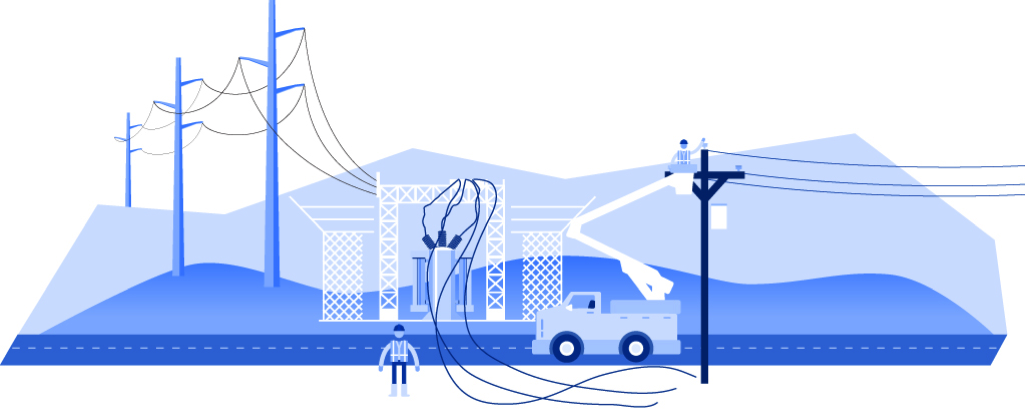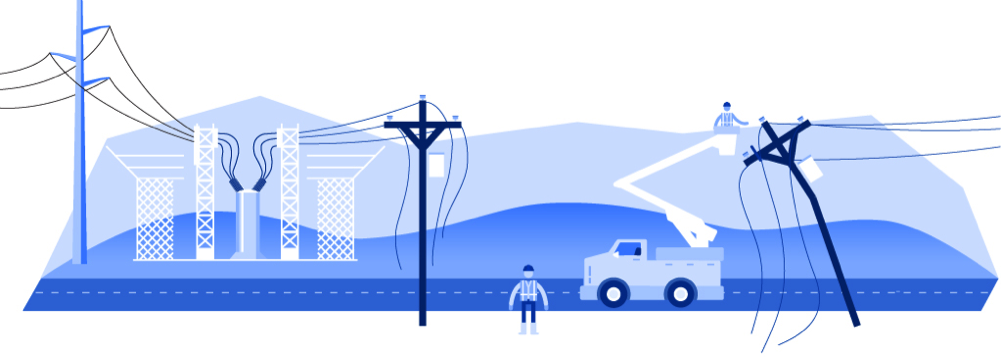When the power goes out, we all want to know the same thing: How long will it take to return? When will the power come back on? Some outages are very short, but when severe weather leaves widespread damage outages can last longer. Rest assured that while you wait crews are springing into action to ensure your power is restored as quickly as possible.
Our crews work to restore power based on the following priorities:

1. Threats to public safety
Safety is always the first priority. Crews give immediate attention to dangerous situations, such as power lines down on roadways or streets. Typically, local police or fire station personnel are called to secure the area until electric cooperative employees can restore power to the area. Sometimes tree crews must clear tree branches or limbs from the area before repairs can be made.
2. High-voltage transmission lines and substations
High-voltage transmission lines and substations supply bulk amounts of power from generation sources, such as power plants or wind farms, to substations on the local distribution system. When damaged, high-voltage transmission lines and substations must be repaired before power can flow to other parts of the system.


3. Distribution substations
If the high-voltage transmission facilities are operating properly but the power is still out, repairs to distribution substations are the next highest priority. Each distribution substation serves hundreds, or thousands, of members. Substations must be repaired before they can supply power down the line.
4. Main lines
These are the primary power lines leaving the distribution substations. Main lines carry power from substations to large groups of members in communities or housing developments.


5. Tap lines
These smaller lines branch off from the main distribution lines to deliver power to smaller groups of members. They connect to transformers, which are mounted on poles or, for underground service, placed on pads.
6. Individual service connections
Finally, once repairs to the larger system are complete, crews work on damage to individual service connections. These are the lines running directly to a home or facility from a transformer. If you have not called to report your outage, your electric cooperative may not know you are without power. In addition, you are responsible for some parts of your service connection. You may need to have a licensed, qualified electrician make repairs before your power can be restored. Contact your electric cooperative for more information.
